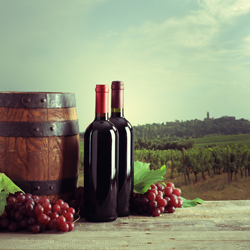
Why You Might Want to Buy Wine – And Not Just To Drink
Many businesses and industries were impacted by the 2008-2009 economic recession. And the wine industry was no exception. During this period, consumers cut back on restaurant wine consumption and traded down on wine purchases, seeking economy over quality. Consumption of premium wines plummeted, while consumption of value brands increased.
Many U.S.-based wine businesses now have recovered and, since 2011, the premium wine category has seen double digit growth, both in the Pacific Northwest and nationally. This growth has made the industry an area of burgeoning M&A activity and attractive investments for financial sponsors.
Below are 4 factors to know about the wine sector right now:
Infrastructure is a problem
To date, U.S. wineries and vineyards have generally been reluctant or financially unable to invest in infrastructure as the industry has readjusted and recovered from the recession. In particular, vineyard development is lagging. Higher commodity prices for alternative crops have also stifled vineyard growth. As a result, the current percentage of pre-productive vineyard acres is very low, and in the face of strong wine demand and increased consumer willingness to pay, the U.S. is facing tight domestic supplies of wine.
Despite these infrastructure challenges, the U.S. generates just over 10% of world wine production, ranking fourth behind France, Italy and Spain. Wine production here is still dominated by California, where approximately 90% of all U.S. wine is produced. The Pacific Northwest wine industry, concentrated in Washington and Oregon, represents approximately 5% of U.S. wine production.
In 2013, wine shipments in the U.S., from both domestic and foreign production sources, grew 3%, to 375.2 million cases, with an estimated retail value of $36.3 billion. This represents 21 consecutive years of volume growth.
The U.S. is the biggest market for wine
The U.S. became the world’s biggest market for wine last year, passing France for the first time. U.S. consumers bought 29.1 million hectoliters of wine in 2013, a rise of 0.5% on 2012, while French consumption fell nearly 7% to 28.1 million hectoliters, according to the International Vine and Wine Organization (OIV). U.S. drinkers are, however, still behind their French counterparts in terms of consumption per head: with the average French person consuming almost 1.2 bottles of wine each week, about six times more than the average American.
Nevertheless, the downward trend in consumption in recent years is fairly dramatic in the wine-drinking heartlands of Europe: in countries such as France, Italy, and Spain, consumption habits are changing. France has seen its consumption per capita fall more than 20% between 2002 and 2013 to 46.8 liters per year. Over the same period U.S. consumers raised their consumption by nearly 17% to 9.1 liters per person per year.
Overall, world wine consumption in 2013 fell by 1% to 239 million hectoliters. U.S. wine exports reached $1.55 billion in winery revenues in 2013, an increase of 16.4% compared to 2012. Volume shipments reached 48.4 million cases.
There will be a lot of M&A in coming years
Silicon Valley Bank (“SVB”) has suggested that as many as 10 percent of wineries will change hands in the next five years, and 31% of owners are willing to sell if circumstances and the offer is right. That turnover in ownership could produce a sea change within the regional industry. With 4,989 wineries on the West Coast, SVB data suggests that 524 wineries are strongly considering selling their operation in the next five years. Projected sales will include 98 wineries in Washington and 79 in Oregon.
Key Criteria that Attract Buyers:
- Significant Volume (at least 8,000 cases produced per annum)
- High direct-to-consumer sales component
- High average sales price
- Land: estate vineyard
- Focus on core varietals
Retail value is created when an acquirer can leverage their existing direct-to-consumer wine channel and national/international distribution with a winery that has a complementary profile.
There should be plenty of activity from strategic buyers as larger multinationals shed labels that are not part of their core operations or strategy. Meanwhile, high-end boutique labels seem to be attracting interest from established mid-market wineries seeking to complement current organic growth. Wine groups are trending towards a portfolio with several core varietals, little overlap in price point, and similar sales channels and distribution philosophy.
Private equity groups have not been very active in the wine industry due to their inability to leverage purchased assets. Activity from the private equity market is likely to increase as banks become more willing to accommodate higher debt levels necessary to increase investment returns.
Valuation Data
The median Total Enterprise Value / EBITDA multiple for recent wine industry M&A transactions has been 16.1x, with a high of 35.3x and a low of 11.1x (based off of limited data available for 7 public transactions). Across the wine industry sectors these multiples have varied widely, with transactions involving real estate and vineyards seeing the highest TEV / EBITDA and winery’s / wine-making operations seeing lower TEV / EBITDA multiples.
The media Total Enterprise Value / Revenue multiple for recent wine industry transactions has been 3.0, with a high of 4.8x and a low of 2.0x, again, based off of data available for 7 public transactions. Keep in mind that smaller, private company transactions will typically have a discount to larger comparable transactions of approximately 20%-30%.
